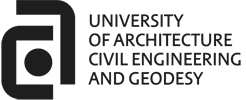Goals and objectives of the subject: The goal of the subject is to consolidate the structural mechanics principles, presented in the previous years of study and to equip the students with skills required to solve a range of engineering problems they not seen before. Students will gain a deep understanding of the concepts and methods underlying modern theory of elasticity, structural dynamics, and stability.
Characteristics of the subject: The classes of the “Theory of elasticity, dynamics and stability” is a complex compilation of topics considering the theory of solid mechanics, dynamics and stability of structural elements and structures.
The topics of the Theory of elasticity consider bodies which are a continuum medium. It is a natural extension of the disciplines “Strength of materials” and “Structural analysis”. The “Theory of elasticity” studies in short, the stress and strain state of two- and three-dimensional continuous bodies. The applied elasticity considers two-dimensional plane stress structures such as walls, floor plates and slabs. The retaining and dam walls are two-dimensional objects which are in plane strain state. The above-mentioned problems can be solved by numerical methods using computer programs.
The topics of structural dynamics deal with the dynamic response of structures subjected to a varying in time loading. The classes start with modelling issues in context of the dynamic structural response. Next classes consider the response of single-degree-of-freedom systems under different types of a dynamic action- free vibration, harmonic forced vibration, arbitrary forced vibration, numerical step-by-step methods of integration. The course continues with the response of multi-degrees-of-freedom systems due to the above-mentioned dynamic loading. The topics end with a short introduction of earthquake engineering.
The contemporary engineering practice uses slender structural elements than the previous centuries. The local and global stability of the structure and structural members becomes very important consideration. Hence the design and analysis of the structures must be based on more precise models which include geometrical and material nonlinearity of structures.
Acquired knowledge: An advanced understanding of the linear-elastic behaviour of solids and structures
Explain the theory, concepts, principles of solid mechanics
Derive the governing equations for basic structural dynamics problems
Solve these problems with various solution technics
Understand contemporary issues in elasticity, dynamics and stability research
Acquired skills: Model an engineering structure without detailed instructions
Critical thinking and judgement of the adopted assumptions and results of the solutions
Interpretation and analysis of data
Ability to undertake problem identification, formulation, and solution
Apply the theory to problems of practical interest
Develop skills in collaborative learning through small-group problem solving and communication
Preliminary requirements: Strength of materials

